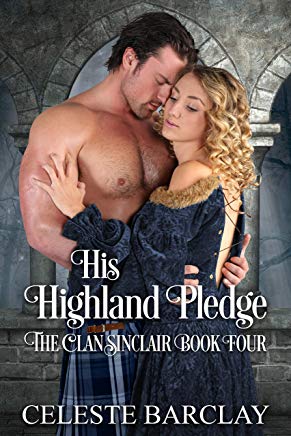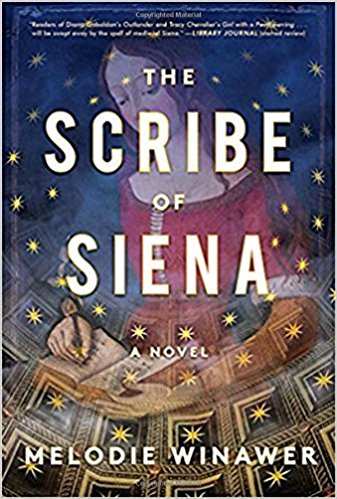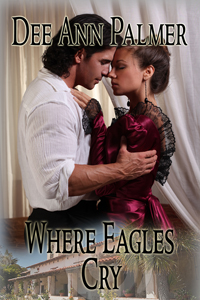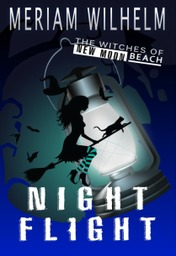Getting in Touch with the Right Side of my Brain by Peter J Barbour
July 13, 2022 by Bethlehem Writers Group in category From a Cabin in the Woods by Members of Bethlehem Writers Group tagged as creativity, innovation, muse, neurologist, Peter Barbour
Betty Edwards’ book, “Drawing on the Right Side of the Brain (1),” opened my eyes to a reality I hadn’t fully appreciated. As a neurologist, I understand the functions assigned to various locations within the brain. However, I never completely respected the dominant hemisphere’s power. Most people are right-handed indicating the left half of the brain is their dominant hemisphere, the center for logic and language. If I let it, my dominant hemisphere rules, governing by talking constantly and ruminating, at times, keeping me up at night reviewing, reminding, advising, revising, and creating anxiety. It can be unrelenting and exhausting.
Pop culture has long espoused that the right, non-dominant, hemisphere, in right-handed people, is the center of creativity. However, functional anatomic studies have not proven that hypothesis; and, in general, the concept of strict lateralization of creativity to the right side of the brain is no longer accepted. Nevertheless, that historic, theoretic construct remains useful for this discussion. (2)
What happened to the right half of the brain or wherever innovation resides? According to Betty Edwards, the education system took care of that by heavily favoring a curriculum of dominant hemisphere activities with emphasis on communicating through reading, writing, speaking, and exercising logic. The dominant side of the brain perceives the parts of things and processes in a linear sequential fashion. On the other hand, the innovative centers tend to be more spontaneous and conscious of the whole.
Right brain development became stunted halfway through elementary school. Betty Edwards points out, if one tries to sketch a picture of something, for many of us whose left-brain dominates, the depiction looks primitive, like something created in fourth grade. Try to draw anything and the left brain won’t allow it. Instead, it names the thing, consciously or unconsciously, and the right hand obeys producing a stereotypical likeness of the object rather than the article observed. The dominant hemisphere takes over limiting creativity.
How can I shut down my left hemisphere, let the right-side shine, and escape the constant banter interfering with sleep and relaxation, and stifling inventiveness? What happens when I finally break away, escaping the left hemisphere’s tyranny. I find quiet and peace. Time flies.
Meditation is one way to achieve this. I turn off the voice, listen to my surroundings, concentrate on breathing. Who knows, if I focus on nothingness long enough, someone wiser than I once suggested, I may hear the angels whispering. Our North American culture doesn’t generally allow for guiltless free unproductive time, making meditation difficult.
I’ve discovered other activities with the hope of reaching the same end. My answer to that conundrum involves incorporating a constructive activity with the mediative practice. I stand in a stream with water rushing past me. An egret walks slowly on the opposite shore staring in my direction. I cast and retrieve a feather tied to a hook at the end of a long line, concentrate on the process, commune with nature. I may even catch a fish. I play a musical instrument, doesn’t matter how well. Music is about spatial relationships, a non-dominant hemisphere specialty. I paint a picture and become a part of the scene, lost in the color, and the lines. I walk among the flowers on the canvas, smell their fragrance, feel the breeze ruffling the leaves. Free the right hemisphere. Time flies.
That brings me to writing/composing. Harness the left brain. Creating fiction is like painting. My pallet is filled with words. I paint with them, craft images, dissolve into the story, live the mystery, fly among the stars to strange worlds, survive a dystopia, fall in love, reminisce, dream, get lost, find my way, escape into a world I create.
1. Drawing on the Right Side of the Brain, Betty Edwards, 1979, Simon and Shuster.
2. Robert Schmerling, Harvard Health Publishing

Peter Barbour has been writing for over thirty years. He published “Loose Ends,” a memoir, in 1987, followed by a series of short stories from 1992 to 1995. “The Fate of Dicky Paponovitch” won Raconteur of the Month, May 1994, Raconteur Magazine, Susan Carrol Publishing. Since 2015, he has published more than twenty-five short stories which have appeared in shortbreadstories.co.uk, storystar.com, and shortstory.me, The Piker Press, Rue Scribe, Star Light Path, and ArtPost Magazine. His short story, “Why Bats Live in Caves,” can be found in “Fur, Feathers, and Scales: Sweet, Funny, and Strange Animal Tales,” an anthology from the Bethlehem Writers Group. Barbour wrote and illustrated three children’s books, “Gus at Work,” “Oscar and Gus,” and “Tanya and the Baby Elephant.” He is a member of the Bethlehem Writers Group. Links to his stories and illustrations can be found at www.PeteBarbour.com Barbour enjoys deconstructing stories to see how they are put together. He grew up loving the Wizard of Oz series, and dutifully read each book in the series to his children. The hero goes on a journey is one of his favorite themes.
He loves the outdoors, and especially the Pacific Northwest, which serves as the setting for many of his stories. He is married, and likes to travel, which affords him the opportunity to absorb new experiences from which to write. Barbour attended the University of Pennsylvania as an undergraduate and Temple University School of Medicine where he earned his M.D. He completed his residency training in Neurology, at Stanford University School of Medicine and practiced medicine in the Lehigh Valley until 2015 when he retired.
He believes that what comes from the heart goes to the heart.
Pete’s Books
Nothing Found
Books from Bethlehem Writers Group, LLC
1 1 Read more
Writer Wellness: A Writer’s Path to Health and Creativity
July 18, 2021 by marianne h donley in category Ages 2 Perfection Online Class, Online Classes tagged as Aged to Perfection, Aged to Perfection Online Class, August Online Class, creativity, Joy Held, Writer's Wellness
Presented by: Joy Held
Date: August 1 – 31, 2021
Pricing: A2P Member fee: $15
Non-A2P Member fee: $30
About the Workshop:
Good self-care is the new multi-vitamin! Writers should still take a multi-vitamin, and Writer Wellness is a complimentary plan to help you stay on target for writing and life. WW is a lifestyle technique for anyone who loves to create with activities to stimulate creativity and health by encouraging regular journal writing, exercise, relaxation, good nutrition, and creative play. Regardless of style, genre, or writing goals, Writer Wellness is the perfect writer’s companion.
The workshop will offer one to three activities per key area (journaling, fitness, relaxation, nutrition, and creative play) for participants to try then respond to discussion prompts posted in the course. This interactive workshop will present ideas any writer can put into practice, tweak, and maintain throughout a writing career with the goal of better health and expanded creativity for many years. Discover the Writer Wellness Warrior in you and be well, write well!
About the Presenter:
Joy E. Held, A.A.S., B.A., M.F.A. is an author, freelance editor, educator, Yoga Alliance Registered yoga and meditation teacher, college English professor, certified Journal to the Self facilitator, and workshop presenter with over 500 articles published in trade magazines, newspapers, and literary journals. Her historical romance novel Message to Love was published in 2010 by The Wild Rose Press. Her nonfiction book Writer Wellness: A Writer’s Path to Health and Creativity, third edition is available from Headline Books, Inc. Joy is a member of Romance Writers of America, Hearts Through History Romance Writers, Northeast Ohio RWA. She holds degrees in education, journalism, and an M.F.A. in Writing Popular Fiction from Seton Hill University.
http://www.joyeheld.com
http://facebook.com/joy.e.held
http://twitter.com/Joy_E_Held
http://www.writerwellness.wordpress.com
https://www.linkedin.com/in/joy-held-4703b187/
VINTAGE 1950s: Around the World in 80 Days
August 3, 2020 by Janet Elizabeth Lynn and Will Zeilinger in category Partners in Crime by Janet Elizabeth Lynn & Will Zeilinger tagged as Craft, creativityThe movie was based on an adventure novel by Jules Verne written in 1873. The movie had an all star cast with David Niven, Cantinflas, Shriley MacLaine, and Robert Newton, with cameo appearances of many others. It was released October 17. 1956 in the US.
To win a bet, a British inventor, his Chinese valet and an aspiring French artist, leave on a trip to explore the world where they experience adventures and danger as they travel around the world in exactly eighty days.
The movie was nominated for eight Academy Awards and won five, beating out critically and publicly praised films like Friendly Persuasion, The Ten Commandments, Giant and The King and I.
Many of the balloon scenes with Niven and Cantinflas were filmed using a 160-foot (49 m) crane. Even that height bothered Niven, who was afraid of heights. Tom Burges, who was shorter than Niven, was used as a stand-in for scenes where the balloon is seen from a distance.
Added note:
In 2017 Mark Beaumont, a British cyclist inspired by Verne, set out to cycle across the world in 80 days. He departed from Paris on July 2 and completed the trip in 78 days, 14 hours and 40 minutes.
For a waltz down memory lane, Here is the trailer to the movie. Enjoy!
Published authors Will Zeilinger and Janet Lynn had been writing individually until they got together and wrote the Skylar Drake Mystery Series. These hard-boiled tales are based in old Hollywood of 1955. Janet has published seven mystery novels, and Will has three plus a couple of short stories. Their world travels have sparked several ideas for murder and crime stories. This creative couple is married and lives in Southern California.
0 0 Read moreWANT CREATIVE CRED? GIVE A LITTLE
July 15, 2019 by Rebecca Forster in category The Write Life by Rebecca Forster tagged as #writingtips, Advice to Myself as a Newbie Author, business, creativity, It's Worth It, opportunities, volunteer Want to know a secret? Volunteering can be your ticket to building a creative career platform.
Want to know a secret? Volunteering can be your ticket to building a creative career platform.
Other professions have embraced the nonprofit strategy as personally fulfilling and professionally strategic. Lawyers work pro-bono, doctors cross borders to help those less fortunate, retired business people and teachers mentor those who need help starting their businesses or getting over a hump.
But nonprofits need more than counsel, they need the kind of exposure writers, filmmakers and artists can provide. Whether you’re looking for that first portfolio piece or expanding an already established career, aligning yourself with a nonprofit offers you a wealth of creative opportunities. Since you might know others in creative careers, here are some suggestions for writers, filmmakers, artists and even chefs and gardeners because creativity is never limited.
WRITERS AND/ OR FILMMAKERS
Profile a volunteer
Interview the administrator
Chronicle the history of the nonprofit
Write the newsletter
Write content for their website/blog
Spotlight the success stories of clients
ARTISTS/PHOTOGRAPHERS
Paint a mural
Design a fundraising invitation
Photograph the clients
Hold art/photography classes
Design a nonprofit’s newsletter
Design a non-profit’s logo
CHEFS/GARDENERS/ETC
Cook for a fundraiser
Landscape the building
Provide floral arrangements for benefits
There is no limit to the benefits you will receive by volunteering your creative services. You will build your portfolio, be introduced to businesses and clients that are ready to pay for your talent, and, above all, you will have made a difference with your words, your images and your creativity. There is no lack of drama at a nonprofit, all you have to do is seek it out.
Eric, my son and Peace Corps Volunteer who served in Albania, writes plays about his experiences. They are produced in Hollywood and the proceeds benefit the village in which he lives.
Sam, a well-known musician, teaches children stricken with cancer how to play the guitar. Because of his volunteer work, the local newspaper did a front-page article on his efforts.
Cheryl, an aspiring filmmaker interviews people in an assisted living facility and runs those interviews on her website calling attention not only to rich histories but also to her talent behind the camera.
Jackie painted a mural on the wall of a local library. She was credited for her work by the library and her work is seen every day of the year not only by those who visit the library but people who walk and drive by.
The next time you’re looking for a way to showcase your talent, look no further than your community. Your portfolio – and your heart – will benefit from your generosity.
1 0 Read more
Seriously Creative with Laura Gates-Lupton OCC/RWA Online Class @A_SliceofOrange
September 23, 2018 by Linda McLaughlin in category Online Classes, Writing tagged as creativity, Laura Gates-Lupton, OCC/RWA Online Class, Seriously Creative, writingOCC/RWA Online Class:
Seriously Creative: A Life Coach’s Approach to Productive Writing Success
October 15-November 9, 2018

About the Class:
Does your internal dialogue sound anything like this?
“I should be more disciplined. I need to be tougher on myself. I said I was going to really focus on my manuscript this week, and I haven’t even looked at it. I need to get up early (or stay up late, or skip my lunch hour) and write. (Insert famously productive writer’s name here) writes ten hours a day, cranks out five bestsellers a year, and still has time to tour. I can’t even manage an hour. I’m such a failure.”
If bullying yourself into submission (pun intended) isn’t working, then this four week course is for you.
Seriously Creative will incorporate the tools and techniques I use with my writer and illustrator clients to help them achieve higher levels of productivity and success without negative self-talk. Using these methods, you will be able to:
-Figure out what’s really getting in your way (hint: it isn’t a lack of discipline)
-Work effectively with the time you have, whether it’s too much or not enough
-Use two types of goals for increased motivation and keeping your work on track
-Create unique habits that work for you and your particular situation
-Understand the number one fear that holds people back from achievement, and how to dissolve it
-Conquer your inner bully, and shut down negative self-talk
By the conclusion of this course you will have a specific plan of action for getting and keeping your writing on track right now, as well as new strategies and techniques that will work for you in all the stages ahead.
 About the Instructor:
About the Instructor:
Laura Gates-Lupton holds a master’s degree in clinical social work and is a Certified Professional Coach. She has been helping people create healthier, happier, more productive lives for over 27 years. She works with clients from all over the US and abroad, and loves seeing her writer clients get their work out into the world. Laura is the mother of three amazing teens (whom she homeschooled, alongside her hardworking husband, until last year), and manages to do a bit of writing and freelance editing on the side. Her mysteries have appeared in Woman’s World, Highlights and Rainbow Rumpus. You can find Laura on LinkedIn and Facebook.
Enrollment Information:
This is a 4-week online course that uses email and Groupsio. The class is open to anyone wishing to participate. The cost is $30.00 per person or, if you are a member of OCCRWA, $20.00 per person.
To sign up or for more information, go to the class page at the OCC/RWA website: http://occrwa.org/classes/online-class-two/.
Linda McLaughlin
OCC/RWA Online Class Coordinator
Affiliate Links
A Slice of Orange is an affiliate with some of the booksellers listed on this website, including Barnes & Nobel, Books A Million, iBooks, Kobo, and Smashwords. This means A Slice of Orange may earn a small advertising fee from sales made through the links used on this website. There are reminders of these affiliate links on the pages for individual books.
Search A Slice of Orange
Find a Column
Archives
Featured Books
A LITTLE CHRISTMAS MAGIC
Christmas in Marietta, with all the trimmings, may be just the ticket.
More info →THE SCRIBE OF SIENA
The captivating story of a brilliant woman's passionate affair with a time and a place . . .
More info →WHERE EAGLES CRY
Jilted by love in 1834, Cara Lindsay sails from Boston to Mexico’s rugged California to begin a new life with a favorite aunt.
More info →NIGHT FLIGHT
Olivia Merriman’s witchy wiring has all gone haywire and if she doesn’t get it under control soon she’s going to lose her boyfriend, her magic and a whole lot more!
More info →Newsletter
Contributing Authors
Search A Slice of Orange
Find a Column
Archives
Authors in the Bookstore
- A. E. Decker
- A. J. Scudiere
- A.J. Sidransky
- A.M. Roark
- Abby Collette
- Alanna Lucus
- Albert Marrin
- Alice Duncan
- Alina K. Field
- Alison Green Myers
- Andi Lawrencovna
- Andrew C Raiford
- Angela Pryce
- Aviva Vaughn
- Barbara Ankrum
- Bethlehem Writers Group, LLC
- Carol L. Wright
- Celeste Barclay
- Christina Alexandra
- Christopher D. Ochs
- Claire Davon
- Claire Naden
- Courtnee Turner Hoyle
- Courtney Annicchiarico
- D. Lieber
- Daniel V. Meier Jr.
- Debra Dixon
- Debra H. Goldstein
- Debra Holland
- Dee Ann Palmer
- Denise M. Colby
- Diane Benefiel
- Diane Sismour
- Dianna Sinovic
- DT Krippene
- E.B. Dawson
- Emilie Dallaire
- Emily Brightwell
- Emily PW Murphy
- Fae Rowen
- Faith L. Justice
- Frances Amati
- Geralyn Corcillo
- Glynnis Campbell
- Greg Jolley
- H. O. Charles
- Jaclyn Roché
- Jacqueline Diamond
- Janet Lynn and Will Zeilinger
- Jaya Mehta
- Jeannine Atkins
- Jeff Baird
- Jenna Barwin
- Jenne Kern
- Jennifer D. Bokal
- Jennifer Lyon
- Jerome W. McFadden
- Jill Piscitello
- Jina Bacarr
- Jo A. Hiestand
- Jodi Bogert
- Jolina Petersheim
- Jonathan Maberry
- Joy Allyson
- Judy Duarte
- Justin Murphy
- Justine Davis
- Kat Martin
- Kidd Wadsworth
- Kitty Bucholtz
- Kristy Tate
- Larry Deibert
- Larry Hamilton
- Laura Drake
- Laurie Stevens
- Leslie Knowles
- Li-Ying Lundquist
- Linda Carroll-Bradd
- Linda Lappin
- Linda McLaughlin
- Linda O. Johnston
- Lisa Preston
- Lolo Paige
- Loran Holt
- Lynette M. Burrows
- Lyssa Kay Adams
- Madeline Ash
- Margarita Engle
- Marguerite Quantaine
- Marianne H. Donley
- Mary Castillo
- Maureen Klovers
- Megan Haskell
- Melanie Waterbury
- Melisa Rivero
- Melissa Chambers
- Melodie Winawer
- Meriam Wilhelm
- Mikel J. Wilson
- Mindy Neff
- Monica McCabe
- Nancy Brashear
- Neetu Malik
- Nikki Prince
- Once Upon Anthologies
- Paula Gail Benson
- Penny Reid
- Peter J Barbour
- Priscilla Oliveras
- R. H. Kohno
- Rachel Hailey
- Ralph Hieb
- Ramcy Diek
- Ransom Stephens
- Rebecca Forster
- Renae Wrich
- Roxy Matthews
- Ryder Hunte Clancy
- Sally Paradysz
- Sheila Colón-Bagley
- Simone de Muñoz
- Sophie Barnes
- Susan Kaye Quinn
- Susan Lynn Meyer
- Susan Squires
- T. D. Fox
- Tara C. Allred
- Tara Lain
- Tari Lynn Jewett
- Terri Osburn
- Tracy Reed
- Vera Jane Cook
- Vicki Crum
- Writing Something Romantic
Affiliate Links
A Slice of Orange is an affiliate with some of the booksellers listed on this website, including Barnes & Nobel, Books A Million, iBooks, Kobo, and Smashwords. This means A Slice of Orange may earn a small advertising fee from sales made through the links used on this website. There are reminders of these affiliate links on the pages for individual books.






























































